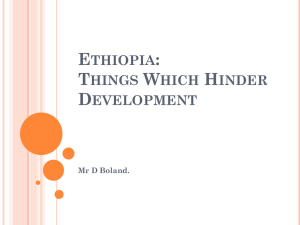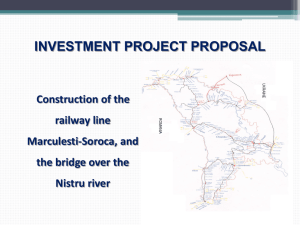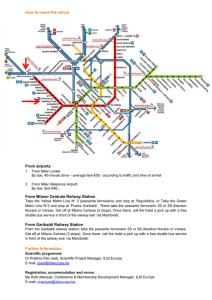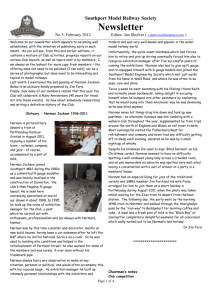16 ko
advertisement
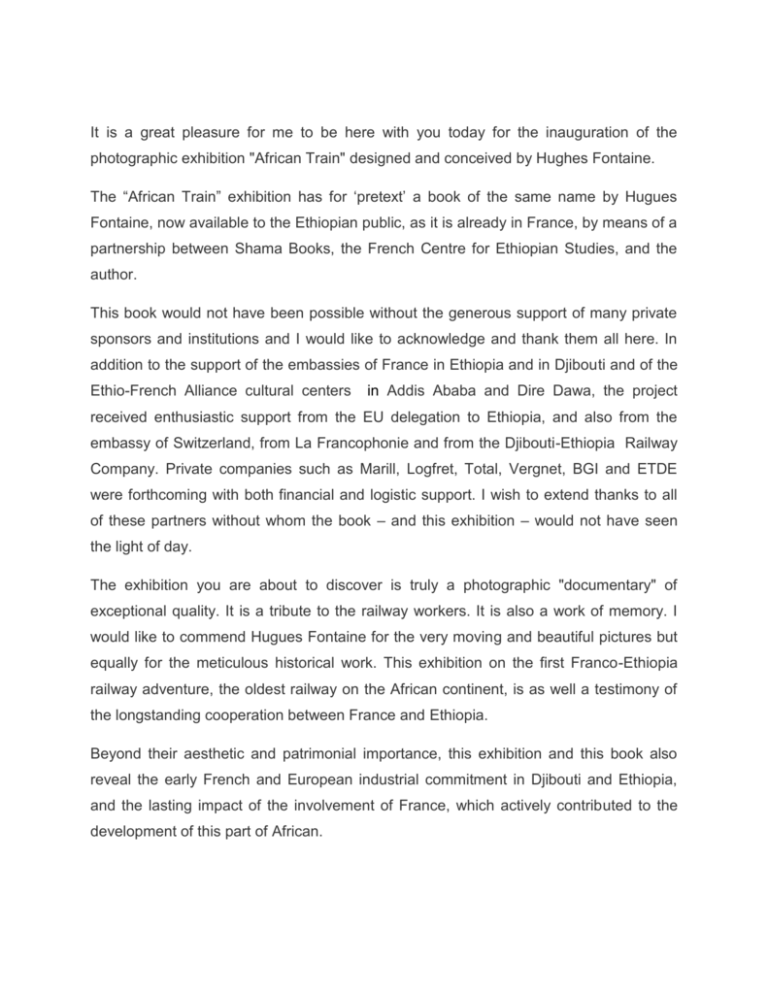
It is a great pleasure for me to be here with you today for the inauguration of the photographic exhibition "African Train" designed and conceived by Hughes Fontaine. The “African Train” exhibition has for ‘pretext’ a book of the same name by Hugues Fontaine, now available to the Ethiopian public, as it is already in France, by means of a partnership between Shama Books, the French Centre for Ethiopian Studies, and the author. This book would not have been possible without the generous support of many private sponsors and institutions and I would like to acknowledge and thank them all here. In addition to the support of the embassies of France in Ethiopia and in Djibouti and of the Ethio-French Alliance cultural centers in Addis Ababa and Dire Dawa, the project received enthusiastic support from the EU delegation to Ethiopia, and also from the embassy of Switzerland, from La Francophonie and from the Djibouti-Ethiopia Railway Company. Private companies such as Marill, Logfret, Total, Vergnet, BGI and ETDE were forthcoming with both financial and logistic support. I wish to extend thanks to all of these partners without whom the book – and this exhibition – would not have seen the light of day. The exhibition you are about to discover is truly a photographic "documentary" of exceptional quality. It is a tribute to the railway workers. It is also a work of memory. I would like to commend Hugues Fontaine for the very moving and beautiful pictures but equally for the meticulous historical work. This exhibition on the first Franco-Ethiopia railway adventure, the oldest railway on the African continent, is as well a testimony of the longstanding cooperation between France and Ethiopia. Beyond their aesthetic and patrimonial importance, this exhibition and this book also reveal the early French and European industrial commitment in Djibouti and Ethiopia, and the lasting impact of the involvement of France, which actively contributed to the development of this part of African. We must reach beyond the nostalgia caused by the antiquated character of the sites and materials that no longer fit today's needs, to remember that at the time, this railroad gave Ethiopia access to both the sea and to the outside world. This commitment of France to Ethiopia's development continues and is at the heart of our presence in this country and in the region. It takes on new forms with the involvement of companies as diverse and as technologically advanced as those developing wind mills near Mekele, supplying turbines of the Renaissance Dam or involved in the transformation of the Telecom company. The recent visit of a delegation of some of the most advanced French industries, especially in the fields of energy, transport and logistics, testifies to the renewed and growing interest of French companies in accompanying the development of Ethiopia. French institutions also support the capacity strengthening of Ethiopia and its universities, notably in the fields of development and of technology, such as railway engineering at Dire Dawa’s University. Franco-Ethiopian cooperation is all the more fruitful as it can rely on the Francophonie, an important aspect of the adventure of the railway in Ethiopia. Because the FrancoDjibouti-Ethiopie railway did not only carry passengers and goods. it also allowed for a robust presence of the French language, in particular in Dire Dawa, where the language is still alive amongst the railway workers. Remarkably, a few of these workers have even retrained to become French teachers. The strength of this common language and culture can also be felt with emotion and joy when playing boules at the railway workers’ pétanque clubs in Addis Ababa and Dire Dawa. In this way, the past brings us back to the present, yesterday’s adventures to tomorrow’s, and nostalgia to dreams of a shared future. I hope you will enjoy the exhibition. Thank you for your kind attention.


